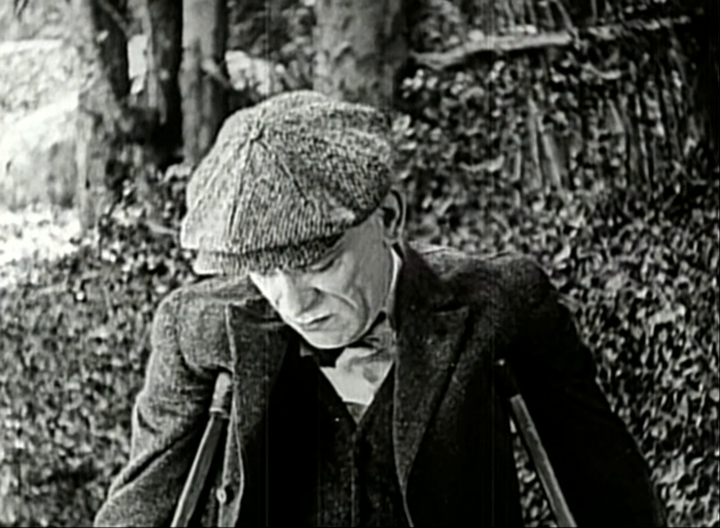
One of my favourite lines from a bad review is “to criticise it would be like tripping a dwarf” though I guess it’s kind of ableist now that I look at it again, but my greater point is that I can’t remember what film it refers to — maybe George Cukor’s JUSTINE? — nor who wrote it, so I am bad.
The reason I even mention it is that I got on a little Mervyn LeRoy kick and watched RANDOM HARVEST which is SUPERB but also MOMENT TO MOMENT, which is dreadful. And really, writing a bad review of that one, a forgotten thriller which was LeRoy’s last directing credit though he also did some work on THE GREEN BERETS (good choice not taking a credit for that, Merv), is supremely pointless. nobody remembers the film, it’s completely undistinguished, and nothing can be served by going over its inadequacies…

So, anyway, MOMENT TO MOMENT has a couple of interesting credits — Jean Seberg and Honor Blackman star, and the script is by John Lee Mahin, whose career goes back to SCARFACE and had worked for LeRoy on THE WIZARD OF OZ (LeRoy produced that one) and QUO VADIS and THE BAD SEED and the very funny NO TIME FOR SERGEANTS, and Alec Coppel, whose name was familiar to me from VERTIGO.
But Coppel was extensively rewritten on VERTIGO by Samuel A. Taylor. Jimmy Stewart’s reaction to Taylor’s initial reworking was that at last the project had some human beings in it. Now, some of the dialogue in VERTIGO is pretty shonky (“We were engaged once, weren’t we?”) and the characters are rather jerked about by the exigencies of a demented plot, so one wonders how bad the Coppel version must have been. Somehow, though, Coppel retained a prominent credit on the film and, despite its disappointing box office performance, this may have done him some good.

The main reason he got hired for MTM, however, must be that he authored the short story it’s based on. So I blame him for everything. LeRoy’s direction is decent, if old-fashioned, very un-1966, and his camera movement is elegant and insistent — this movie GLIDES. LeRoy did admit that he erred in casting Sean Garrison, an amiable lightweight, saying that he should have gotten someone like Paul Newman. Well, I would imagine that if he could have done so, he would’ve done so.

Garrison is very handsome and seems like he might be gay (and he’s playing a sailor). This slightly undercuts the intended sexual tension with our heroine, Jean Seberg, but actually makes the film more interesting. Seberg is drawn to Garrison because her husband (Arthur Hill) is constantly travelling on business (in Edinburgh, my city, at one point, though we never see this). And the surprising gay subtext rears up here too, as Hill says he has to get off the phone to Seberg because his taxi has arrived: what we SEE is not a taxi but a very chiselled young man. Is this all unintentional? It’s never acknowledged.

Anyway, to the plot: Garrison, an artistically-inclined sailor who doesn’t drink (!) suddenly becomes aggressively romantic at Seberg’s place one night, and then tries to shoot himself. In the struggle, the gun goes off and kills him. In a panic, Seberg calls on her neighbour Honor Blackman, who throws orgies it seems, to help her dispose of the corpse. Obliging in more departments than one, Blackman agrees.
But then detective Grégoire “Coco” Aslan enters the story, intent on solving the case. And there’s a twist, though Garrison was apparently killed by a bullet to the heart, he wasn’t killed dead. But he has amnesia, and Aslan and a tame shrink are trying to help him recover his memory as to who shot him.


The amnesia angle is sort of welcome just because it ties the movie in with RANDOM HARVEST. And the version of retrograde amnesia depicted in this movie is reasonably credible, unlike RH’s fantasy of “Who am I?” identity erasure and a second knock on the head bringing back the initial memory but erasing all the intermediate experience, which is ludicrous but fun from a narrative viewpoint.
But having a more convincing version of amnesia does not automatically make your film better. Coppel’s plot is TERRIBLE — obviously patterned on LES DIABOLIQUES (VERTIGO had brought him into proximity with original authors of both films Boileau & Narcejac), it requires us to feel nerve-biting suspense about whether Garrison’s memory will come back and prove that Seberg DID NOT KILL HIM.
(In LES DIABOLIQUES, Charles Vanel’s rumpled Javert/Columbo is a genuine menace because our protag, Vera Clouzot, has genuinely been involved in a murder plot.)
The worst Seberg might be charged with is concealing a death, but as Garrison wasn’t dead that would seem either academic or moot or some terrifying combination of both. Of course having a sailor attempt sailorcide in her home late one night while her husband was away might jeopardise her marriage, which would be fine dramatic stakes in a romantic melodrama, but this movie opens with a gunshot in a thunderstorm and wants to be seen as a gripping thriller.

Characterisation!
To continue tripping this dwarf would be like continuing to trip a dwarf who was already flat on the pavement. I will just say that the film prominently features a game of balancing geometric shapes, which is striking and strange because the same week I watched it I went to see Miyazaki’s THE BOY AND THE HERON, which contains THE SAME THING. [sinister music]




















